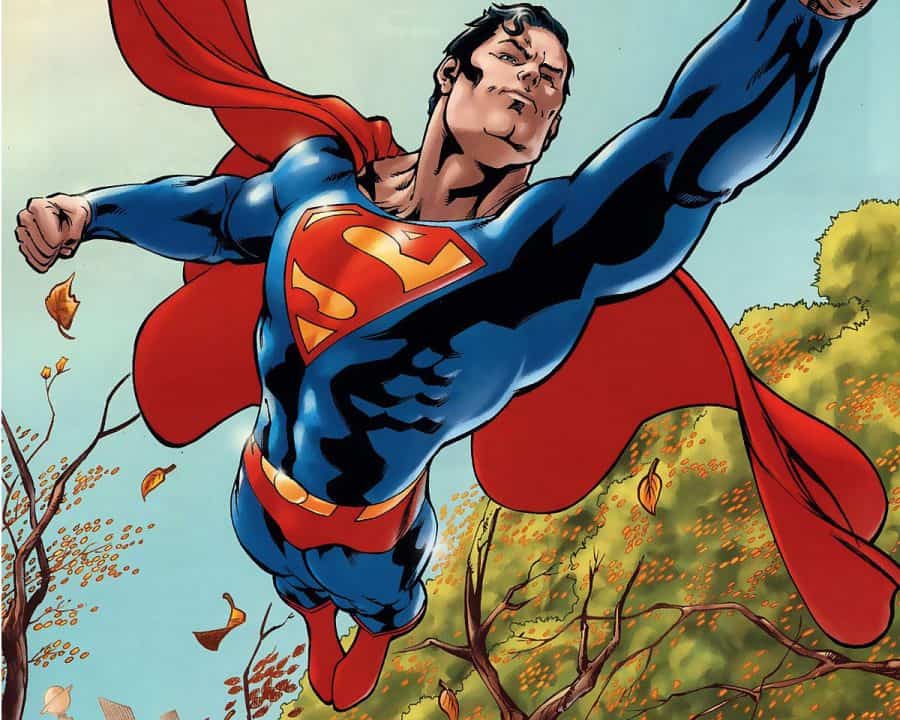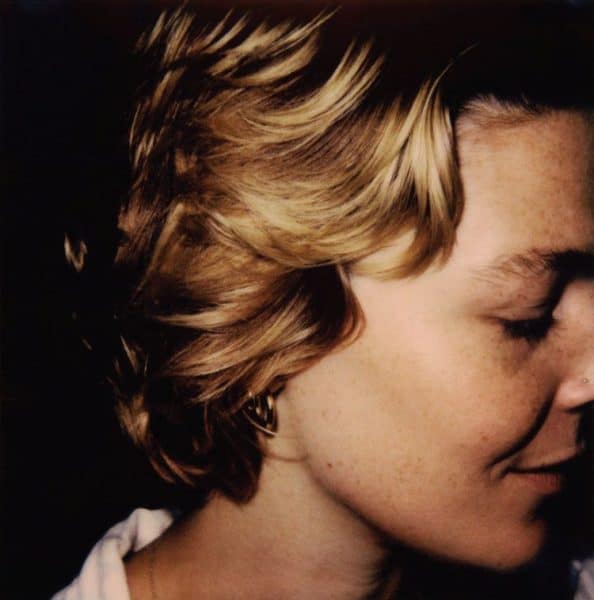The Birth and Death of Superman: “Doomsday Clock,” hope and a visit to Cleveland
June 11, 2019
In Grant Morrison and Frank Quitely’s “All-Star Superman” #10, published in 2006, Superman is dying. It’s a formula that’s been used time and time again, a well-worn path that gives creators and readers an insight into what makes Superman so important, what he stands for and what legacy he hopes to leave. Sometimes he leaves us with a message (“Do good to others, and every man can be a Superman”), sometimes he leaves us with a wink, reminding us that Superman is an idea, a message of hope, an aspirational figure.
In “All-Star Superman” #10, part of an out-of-continuity story that aims to provide an ending to a character who will never end, and as “The Dark Knight Returns” did for Batman in the 1980s, the Man of Steel searches for solace in discovering what a world without a Superman looks like. He creates his own universe, sparks life and watches throughout the issue as culture and history develop on an Earth very much like our own. Superman sees philosopher Friedrich Nietzsche develop the idea of the Ubermensch, the Superman, and watches as cities rise and fall in a world without superheroes.
The issue ends as two kids from Cleveland begin to sketch out a character they will call “Superman.” He wears red-and-blue tights, lifts cars over his head and jumps buildings in a single bound. Morrison and Quietly present us with a world without a Superman, our world, where the idea of Superman is just as strong, just as powerful, as the champion of Truth, Justice and the American Way. In a world without a Superman, we create him anyway.
My great-grandparents, in 1938, lived about fifteen minutes across town from Jerry Siegel and Joe Shuster, the real-life creators of Superman. Siegel and Schuster grew up in Glenville, Cleveland, a Jewish neighborhood on the east side of a city racked by the Great Depression. Superman, in those days, was something of an agitator for the poor and defenseless, taking on corrupt businessmen and politicians, fighting for the common man. He was a product of Siegel’s and Schuster’s lives, an immigrant whose feats of strength and firm moral character made him a defender of hope. He was Jewish in many ways. His journey from Krypton is a sci-fi version of Moses’s trip down the river, and his Kryptonian name, “Kal-El,” is hardly different from names that would have been all around Glenville: Daniel, Michael, Ishmael, Immanuel.
DC comics do not travel straight forward in time. A long history of retelling stories, of changing universes and altering timelines, has meant that in many ways the stories they tell are recursive, reflecting each other in concentric circles. Stories tend to reflect things that happened in the past, to draw from them without saying that those stories “happened,” that the characters remember them. Out this June, “Doomsday Clock” #10 by Geoff Johns and Gary Frank, has changed the DC universe, home to Superman, once again. I’ll refrain from the complicated continuity of the series, but I will give this away: the powerful Dr. Manhattan, a character designed as a reaction to Superman in the classic graphic novel “Watchmen,” travels to the DC universe and is drawn to the Last Son of Krypton.
Dr. Manhattan is drawn, as Superman was in “All-Star Superman,” to April 18th, 1938, to the day that Siegel and Schuster’s creation first appeared in “Action Comics” #1. He watches as Superman bursts onto the scene, saving folks in the story Siegel and Shuster wrote in Glenville, and then watches as he disappears, the universe changing because of publishing decisions, Superman’s story changing as it has over the years. Like us, Dr. Manhattan has a full understanding of the shifting versions of these characters. He understands that the world changes because “Crisis on Infinite Earths” is published in 1985, understands that it changes again with “Flashpoint” in 2011. He watches the origin of Superman change, over and over, watches the many versions and stories of his coming to Earth that have been the other side of the death of Superman, a story that DC keeps telling, over and over again, about the first days of the Man of Steel.
Superman, Dr. Manhattan realizes, is the center of not just the universe, but the Metaverse, the very heart and soul of DC Comics and of all superheroes. All of creation, all of comic books, react to whatever version of Superman we need when we need him. This is not a new idea. Grant Morrison’s “All-Star Superman” is a sort of prime version of the character, part of an overarching story that also includes “Final Crisis,” in which Superman is established as the single beating heart of creation, not constrained by continuity or editorial decisions but free to move around them, in the most important moments, to become a pure idea. This is the Superman who exists because we created him because two kids in Cleveland needed to dream him up.
Glenville is no longer a Jewish neighborhood. In recent decades it has faced many of the toughest conditions in Cleveland, poverty and urban decay setting in as the population transitioned to one that is largely African American. Synagogues are now Christian churches, and the homes built for the Eastern European immigrants have been left in disrepair. Glenville has been home to racial conflict, and still faces some of the worst of what it faced in the 1930s: poverty, economic decline, poor health systems, dead-end jobs, systematic racism. Joe Schuster’s house is gone. Jerry Siegel’s house still stands, decked out in what appear to be offerings left by visitors. Action figures, statues, Superman pajamas and costumes hang from the fence, adorn the garden, dangle from windows. People, as I did last week, arrive to see the place where Superman was born. It is Krypton, it is Smallville, it is Metropolis, it is Cleveland. It is a neighborhood that has faced the worst of our systems for a long time, a neighborhood that has not seen Superman come back to save it.
“Watchmen,” the 1986 series from which Dr. Manhattan hails, is about a world where superheroes have ruined society. It is a dark, cynical, deeply Cold War look at superheroes. That universe is, firmly, one without a Superman. There, “Action Comics” #1 inspired a real-life team of superheroes and a sequence of events that ends with total devastation, in near-complete desolation. “Doomsday Clock” is looking back on it, as so much of comic books have done since its release (as have other projects: Pixar’s “The Incredibles” draws from “Watchmen” significantly), and wondering whether that story, of a failed genre, of a failed idea of a Superman, is true. A new “Watchmen” series from HBO is set to debut later this year, not as an adaptation but a TV sequel, and books like Dynamite’s “Peter Cannon: Thunderbolt” and Grant Morrison’s own “Multiversity: Pax Americana” at DC have done the same in recent years. Even the DC Extended Universe in Zack Snyder’s “Man of Steel”/”Batman v. Superman”/”Justice League” movie trilogy follows ideas and themes from Snyder’s own adaptation of “Watchmen.”
Not all of these projects are good, and “Doomsday Clock” is certainly far from a perfect answer to the reevaluation of comic books and superheroes that the world seems to be going through, but it is interesting, and though it hasn’t concluded yet, this latest issue suggests the series is moving toward an answer to the question of whether Superman, and superheroes, are a faulty idea.
Glenville was not saved by Superman. Siegel and Schuster struggled for their entire lives after selling their character for pennies. And yet, their creation is certainly one of the most successful characters created in the last century, and the genre he inspired has taken over the world, scoring at the box office, on the TV screen and in thousands (literally: “Action Comics” #1000 came out last year) of comic books. Superman, so much of DC comics has told us, is the heart of something special. He stands for hope, for truth, for justice, for the best version of the American Way. “Watchmen” takes him at face value, I have always thought, an inspiration for violence in an already violent world. And yet, when I visit the shrine of Superman in Glenville, when I see the place where he has been needed most, where he is needed now, I am reminded that in a world without Superman we create him, not as a figure of vengeance, not as an answer for the world’s problems, but as an inspiration, a hope for what we can be, always better, always more heroic.
We seem to crave superheroes now more than ever. We crave, I think, an inspiration for a better world, a better way. The offerings, the sign that marks the home, are signals of a pilgrimage, taken by fans, yes, but also by those whose lives have been shaped by the idea of a mild-mannered boy from Kansas, an immigrant whose power comes more from his humanity than his strength. They are a sign of a world that needs Superman, that created him and keeps coming back to him, again and again, as an important symbol. Yes, Superman is the intellectual property of the Warner Brothers Corporation. Yes, he’s in comic books and movies and TV shows in order to make money, but there’s a reason he’s a moneymaker. It’s because he means something to a lot of people because the stories and characters and worlds he has inspired say something about the stories we search for.
On one page of “All-Star Superman” #10, Superman saves a teenager from committing suicide. He doesn’t swoop down to save her as she falls from a Metropolis building. Instead, he lands softly behind her, saying, “It’s never as bad as it seems. You’re much stronger than you think you are. Trust me.” Their silent embrace has become one of the most iconic panels in Superman’s history. Those who come to Cleveland to see the house where Superman was born come because he has made them feel like they are not alone…like they are stronger than they think they are. It reminded them, it reminded me, with a wink and message (“Do good and every man can be a Superman”) that hope lives on, that the best of us is possible. Sometimes stories like “Doomsday Clock” have to jump through hoops to address continuity, or are burdened with thousands of issues of backstory. It’s why I always go back to “All-Star Superman” #10, where a world without a Superman, this world, Cleveland, Ohio, is just as heroic, just as important, as life-changing as Smallville, as Metropolis, as Krypton, as long as we have hope.











